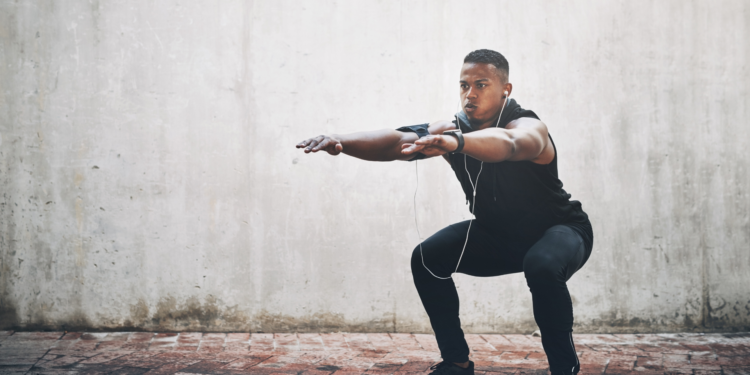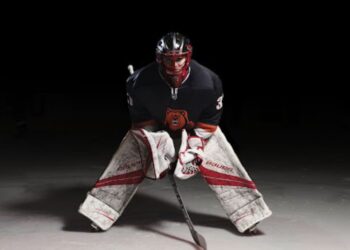Calisthenic workouts focus on movements that build strength and enhance flexibility. They also foster endurance in the body. Calisthenic leg workouts are no different. What they bring in simplicity is balanced with effectiveness. These are workouts that will leave you feeling exercised and strong.
A calisthenic leg workout builds the foundation of your strength and mobility. It has to be structured in a way that both shreds fat and builds muscle. That’s exactly what we have here for you. In this article, you’ll learn the 4 best calisthenic leg exercises. We’ll guide you through each exercise in turn. Then, you can build them into your routine. Remember, the best athletes never skip leg day.
The Benefits of a Calisthenics Leg Workout
We could wax lyrical on the benefits of bodyweight training all day. Specifically for your legs, the benefits are increasingly noticeable:
- Enhanced Muscle Strength: Each exercise listed below is designed to target multiple different groups of muscles in your legs at the same time. That means you’re not working with a single group to exhaustion. You’re preventing muscle imbalances.
- Improved Flexibility: Calisthenic exercises naturally aim to increase your range of movement. Each exercise stretches the leg muscles so that, over time, you’ll feel more flexible. The added benefit to this is that you’re far less likely to face injuries.
- Better Balance and Coordination: Stronger, more flexible legs mean you’ll find it far easier to balance and have better control over your muscles.
- Convenient and Versatile: Apart from what’s listed below, the beauty of calisthenic workouts is that they require very little in the way of equipment.
Squats
Targeted Muscles: This is a full-leg workout, with primary targets of the glutes, hamstrings, quadriceps, and lower back.
Description: Squats should be a part of any calisthenic leg workout. They’re the quintessential calisthenics exercise. They’re designed to mimic a classic everyday motion so that you build functional strength.
- Prepare: Position yourself so that your feet are roughly shoulder-width apart. Your toes should be pointed outwards slightly. A good way of keeping balance is to point your arms out from you. This counterbalances your weight.
- Descend: Push your hips back and bend your knees. Imagine that you’re sitting down in an invisible chair. Your knees shouldn’t go further out than your toes. Also, make sure that you keep your chest up and back straight. This will reduce the risk of injury and promote good posture.
- Depth: At first, you might not be able to get as low as you’d like, but remember, this will take time. Flexibility and range will increase as you progress. Aim to get your thighs parallel to the ground or beyond. The deeper you can squat, the more muscles will be worked. Don’t push too far too soon, or you risk a tear or strain.
- Return: Drive from your heels to ascend back to where you started. Engage both your quads and glutes as you rise.
- Repeat: A good starting point is to complete 3 sets of around 10-15. This will increase as you develop until you get to a point of adding weight.
Throughout the exercise, ensure your core is engaged at all times.
Lunges
Targeted Muscles: Quads, hamstrings, glutes, and core.
Description: Lunges are another versatile exercise that work extensive muscle groups at once.
- Prepare: Stand upright with your shoulders square and your feet roughly hip-width apart.
- Step: Step forward with your right leg and allow your weight to follow it. This should be a fairly large step but not one that feels straining.
- Lower: Lower yourself down until both your front and back knees are at right angles. Try to keep your back knee hovering just above the ground. Keep your hips and upper body vertical and straight.
- Return: Drive from the heel of your front foot and return to the position you started in.
- Repeat: Aim to complete 3 sets of around 8-12 on each leg, alternating between the two.

Once you’re happy with your form, you can turn this exercise into a walking lunge for added mobility and balance training.
Calf Raises
Targeted Muscles: Calf muscles (both the gastrocnemius and soleus)
Description: A more targeted exercise that promotes lower leg strength and increases your range of movement.
- Prepare: Stand upright with your feet roughly hip-width apart. If you struggle with balance, use a wall or chair.
- Lift: Raise your heels and shift onto your tiptoes. The higher the heels, the more muscles are engaged.
- Hold: At the top of your range, hold the position for a second or two. Engage your calves as you do.
- Return: Lower back to the ground at the same speed as you raised.
- Repeat: 3 sets of 12-15 per leg is a great start.
Once you’re happy with your form, try doing only one leg at a time or standing on the edge of a platform.
Glute Bridges
Targeted Muscles: Glutes, hamstrings, core.
Description: Glute bridges are all about what we call your posterior chain. These are crucial when it comes to improving your posture and building power.
- Prepare: Lie on the ground on your back. Bend your knees so that your feet can be flat on the ground, roughly hip-width apart. Arms can be laid on the ground.
- Lift: Keeping your feet on the ground, push through your feels so that your hips rise toward the ceiling. Engage your glutes throughout.
- Hold: At the top of your range, hold the position for a second or two.
- Return: Gently lower, but rather than reaching the floor, hover just above.
- Repeat: Aim to complete 3 sets of 10-12.
Once you’re happy with your form, you can turn this exercise into a walking lunge for added mobility and balance training.
Calisthenic Leg Workout Equipment
The beauty of calisthenics is that you don’t need much in the way of equipment, but there are some things that make life a lot simpler if you have them.

- The Fit! Home Gym: The Fit! home gym in your home helps you to create a dedicated space for your workout. Having that space is great for preparation time and your mental well-being. It’s a place you know is there for self-care. This professional grade calisthenic home gym equipment lets you get started immediately.
- It includes a variety of bars designed to allow you to complete floor work, dips, and pull-ups.
- The ergonomic design ensures you’re working out in comfort while pushing yourself to the next level.
- Use the bars to help you steady your balance as you learn new calisthenic exercises and build strength.
- Yoga Mat: Ground work is considerably more comfortable with one of these under you.
- Bench or Chair: If you’ve not got access to a home gym setup, a bench or chair might help.
- Foam Roller: Don’t underestimate the importance of post-workout recovery. These things hurt but in a good way.
Key Takeaways
These calisthenics leg workouts are the perfect option if you’re looking to build lower body strength, promote flexibility, or improve muscle tone. As always, listen to your body and gradually increase the intensity.
- Progress at your pace. Don’t push it too hard too soon, or you’ll risk injury.
- Consistency is more important than infrequent monster sessions.
- Balance these leg workouts with upper body and cardio for a rounded routine.








